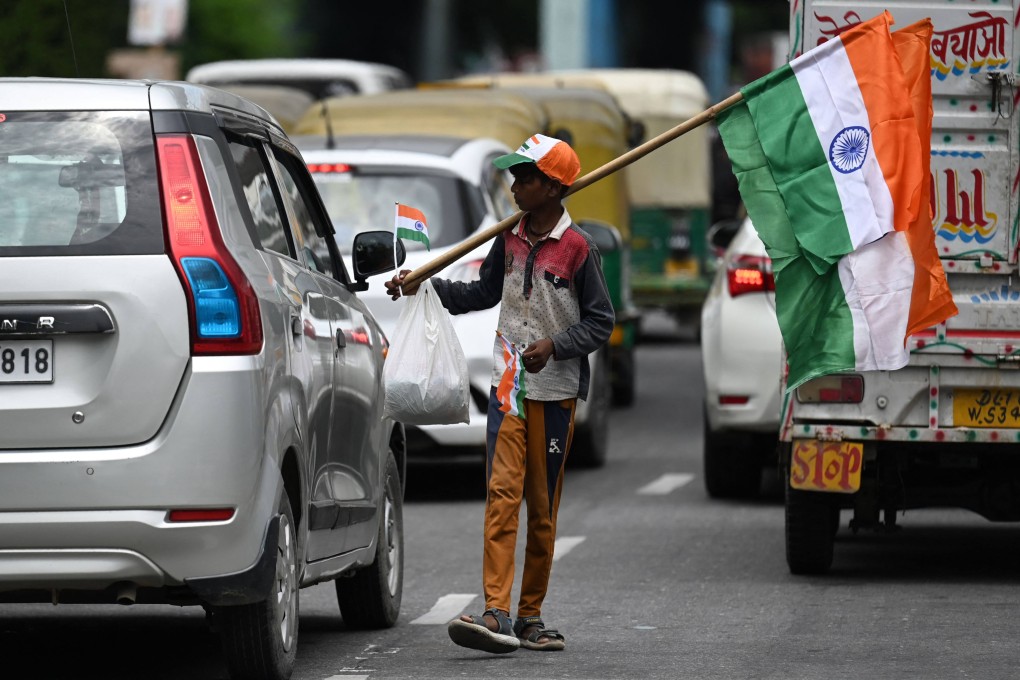India marks 75th independence anniversary with rapid growth, deep inequality
- As India marks the 75th anniversary of the end of British rule, its economy is booming and expected to grow further, a huge transformation
- However, there are problems, including inequality, polarisation, child malnutrition and not enough secure jobs to go around

India celebrates the 75th anniversary of its freedom from British rule Monday with an economy expected to grow by more than 7 per cent this year, making it the fastest-expanding globally this year – a performance that could continue for the next decade. It is also set to be the world’s fifth-largest economy this year, when only a decade ago it was not even among the top 10.
“The Indian economy is set for its best run in over a decade as pent-up (post-pandemic) demand is being unleashed,” said Morgan Stanley chief economist Chetan Ahya, adding that corporate balance sheets are “healthy” and business confidence is strong.
The country’s rebound from the deadly coronavirus that sent the economy into a tailspin has been enviably robust, reinforcing India’s claim to be a global powerhouse.
The nation has undergone a massive transformation from its impoverished state in 1947, when British India became two new independent countries – India and Pakistan. However, economic progress in the early decades after independence was sluggish and significantly lagged behind East Asia’s high-speed expansion.

Part of the reason was India only began opening up its Soviet-style planned economy to the outside world in 1991. India’s liberalisation came more than a decade after China’s rise as “factory to the world” was propelled by high investment and top-notch infrastructure.